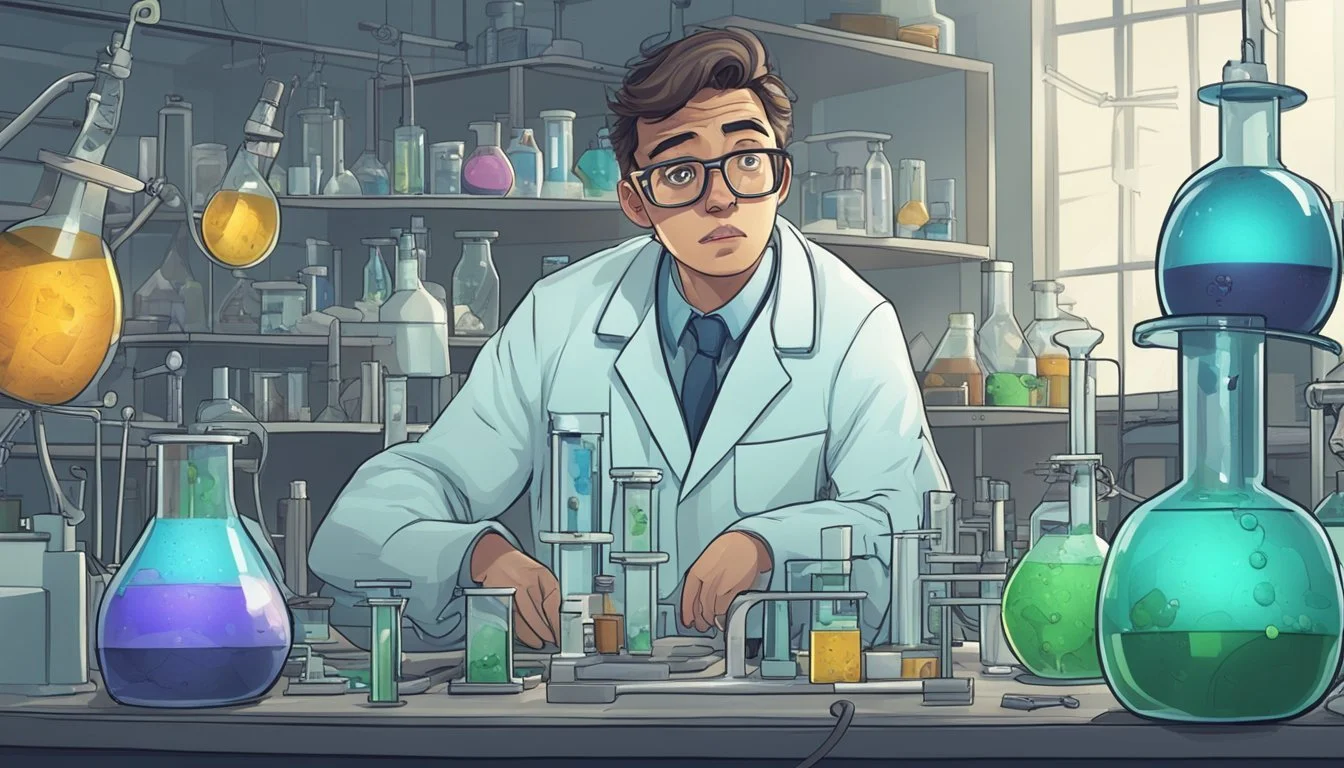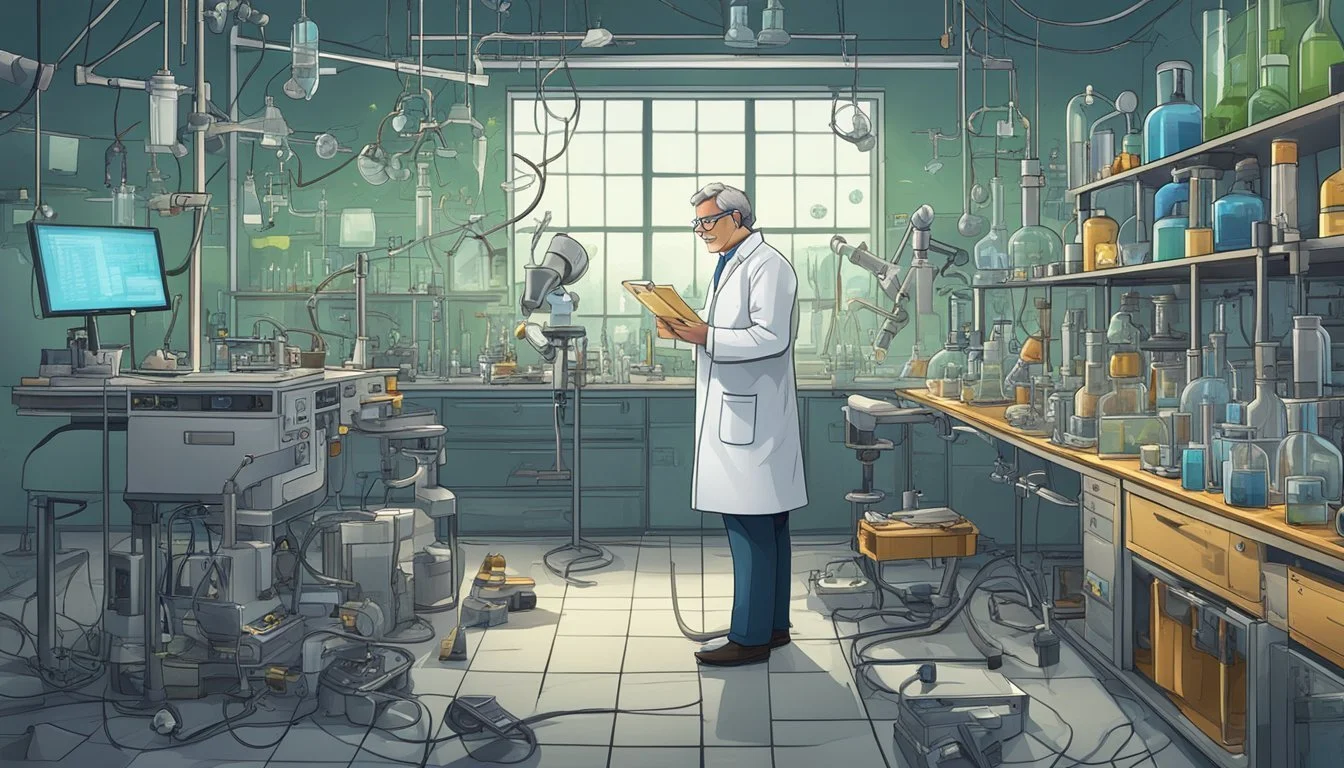7 Documentaries About Scientific Blunders That Changed the World
Exploring Pivotal Mistakes in Research History
Scientific progress often involves learning from mistakes and failures. Documentaries exploring major scientific blunders provide fascinating insights into how even brilliant minds can make errors that shape our understanding of the world. These films offer viewers a chance to see behind the scenes of scientific discovery and innovation.
These documentaries highlight how incorrect theories or failed experiments can lead to unexpected breakthroughs and advancements in scientific knowledge. By examining past mistakes, scientists and researchers gain valuable lessons that inform future work. The films showcase both the human side of scientific endeavors and the rigorous process of testing and revising hypotheses based on new evidence.
1) The Mars Climate Orbiter Mishap
The Mars Climate Orbiter mission in 1999 stands as a stark reminder of the importance of precision in space exploration. NASA launched this spacecraft to study the Martian atmosphere, but it never completed its mission.
The orbiter's failure resulted from a simple yet catastrophic error. Engineers at Lockheed Martin used English units (pounds-force) for thrust calculations, while NASA's Jet Propulsion Laboratory expected metric units (newtons).
This discrepancy caused the spacecraft to approach Mars at a much lower altitude than intended. As a result, it likely burned up in the planet's atmosphere or veered off into space.
The loss of the $125 million orbiter highlighted the critical need for standardized measurement systems in international collaborations. It also emphasized the importance of thorough communication and verification processes in complex scientific endeavors.
This incident serves as a powerful lesson in the documentary "The Metric Mixup: Mars Climate Orbiter's Fate" (https://www.imdb.com/title/tt15073972/). The film explores the human factors behind the mishap and its impact on future space missions.
2) Chernobyl Disaster
The 1986 Chernobyl nuclear disaster remains one of the most catastrophic scientific blunders in history. Several documentaries have explored its causes, consequences, and lasting impact.
"The Battle of Chernobyl" (2006) provides a comprehensive look at the disaster, including rare footage and interviews with key figures. It examines the immediate response and long-term effects on the surrounding area. IMDb
"Chernobyl Heart" (2003) focuses on the health impacts on children born after the disaster. This Oscar-winning short documentary reveals the ongoing medical challenges faced by affected communities. IMDb
"The Russian Woodpecker" (2015) takes an unconventional approach, exploring conspiracy theories surrounding the disaster. It follows an Ukrainian artist's investigation into potential connections between Chernobyl and Cold War-era military installations. IMDb
"Chernobyl: Consequences of the Catastrophe" (2016) examines the environmental and ecological impacts of the disaster. It features insights from scientists studying the affected regions decades later. IMDb
These documentaries offer diverse perspectives on the Chernobyl disaster, its causes, and its far-reaching consequences.
3) The Challenger Explosion
"Challenger: The Final Flight" is a 2020 Netflix docuseries that examines the 1986 Space Shuttle Challenger disaster. The series explores the events leading up to the tragedy and its aftermath.
The documentary delves into the technical issues and decision-making processes that contributed to the explosion. It features interviews with key individuals involved in the mission and NASA officials.
"Challenger: The Final Flight" provides a comprehensive look at the human and engineering factors behind the disaster. The series highlights the pressure to launch despite concerns about the O-ring seals in cold weather.
The docuseries also explores the personal stories of the seven astronauts who lost their lives in the explosion. It examines the impact of the tragedy on their families and the nation as a whole.
Through archival footage and expert analysis, the series offers viewers a detailed understanding of this pivotal moment in space exploration history. It serves as a sobering reminder of the risks involved in pushing the boundaries of science and technology.
[https://en.wikipedia.org/wiki/Challenger:_The_Final_Flight]
4) Fukushima Nuclear Accident
The Fukushima Daiichi nuclear disaster occurred on March 11, 2011, following a devastating earthquake and tsunami in Japan. It became one of the most significant nuclear accidents since Chernobyl.
The documentary "Inside Japan's Nuclear Meltdown" provides a detailed account of the events that unfolded during the crisis. It explores the challenges faced by workers and officials as they struggled to prevent a catastrophic meltdown.
"Fukushima: Is Nuclear Power Safe?" examines the broader implications of the accident on the nuclear power industry. The film delves into the safety concerns and public perception of nuclear energy in the wake of the disaster.
"Nuclear Aftershocks" investigates the long-term environmental and health impacts of the Fukushima accident. It highlights the ongoing cleanup efforts and the difficulties in decontaminating the affected areas.
"The Fukushima 50" tells the story of the brave workers who remained at the plant during the crisis. Their efforts to cool the reactors and prevent further damage are portrayed in this gripping documentary.
https://www.imdb.com/title/tt2411748/
5) Therac-25 Radiation Overdose
The Therac-25 incident stands as a stark reminder of the devastating consequences of software errors in medical equipment. This radiation therapy machine, designed to treat cancer patients, malfunctioned in the mid-1980s due to programming flaws.
The machine's software contained critical bugs that caused it to deliver massive radiation overdoses to patients. These errors resulted in serious injuries and fatalities among those receiving treatment.
Six patients were affected by the Therac-25's malfunction, suffering severe radiation burns and long-term health complications. The incident highlighted the crucial need for rigorous testing and safety protocols in medical technology.
The Therac-25 case became a seminal example in computer science and engineering ethics courses. It emphasizes the importance of thorough software testing, especially in safety-critical systems where human lives are at stake.
This tragic event led to significant improvements in medical device regulation and software development practices. It continues to serve as a cautionary tale about the potential dangers of over-reliance on software without adequate safeguards.
https://en.wikipedia.org/wiki/Therac-25
6) The Vasa Ship Sinking
The Vasa was a grand Swedish warship built in the early 17th century. It was designed to be the most powerful vessel of its time, showcasing Sweden's military might and wealth.
On August 10, 1628, the Vasa set sail on its maiden voyage from Stockholm harbor. Crowds gathered to witness the launch of this impressive ship.
Tragically, the Vasa sank after sailing only 1,300 meters. The ship capsized and sank within 20 minutes of leaving port, claiming the lives of many crew members and passengers.
Investigations revealed that the Vasa's design was flawed. The ship was top-heavy and lacked sufficient ballast to counterbalance its weight.
The Vasa remained underwater for over 300 years until its rediscovery in the 1950s. It was salvaged in 1961 and is now preserved in Stockholm's Vasa Museum.
The sinking of the Vasa serves as a cautionary tale about the dangers of prioritizing aesthetics and grandeur over practicality and safety in engineering.
[https://en.wikipedia.org/wiki/Vasa_(ship)]
7) Metric System vs. Imperial Conversion Error
The documentary "The Metric Martyrs" explores one of NASA's most costly mistakes. In 1999, the Mars Climate Orbiter mission failed spectacularly due to a simple unit conversion error.
The film details how the spacecraft's navigation software used metric units, while the ground crew provided data in imperial units. This mismatch caused the orbiter to approach Mars at the wrong angle, resulting in its destruction.
Viewers learn about the $327 million loss and the embarrassment faced by NASA. The documentary examines how such a basic error could occur in a high-stakes space mission.
Interviews with engineers and project managers reveal the importance of clear communication and standardized measurement systems in scientific endeavors. The film also touches on the broader implications of measurement discrepancies in international collaborations.
"The Metric Martyrs" serves as a cautionary tale about the consequences of overlooking seemingly minor details in complex projects. It highlights the ongoing challenges posed by the coexistence of metric and imperial systems in the modern world.
Impact of Scientific Errors on Society
Scientific blunders can have far-reaching consequences, shaping technological progress and influencing public trust in the scientific community. These errors often lead to unexpected developments and challenge established paradigms.
Long-term Effects on Technology
Missteps in scientific research can significantly impact technological advancements. The cold fusion debacle of 1989 serves as a prime example. Two chemists claimed to have achieved nuclear fusion at room temperature, sparking global excitement. This error led to wasted resources and delayed progress in alternative energy research.
Conversely, some blunders have yielded positive outcomes. Alexander Fleming's accidental discovery of penicillin resulted from a contaminated experiment. This mistake revolutionized medicine and saved countless lives.
Errors in climate models have prompted refinements in prediction techniques. Inaccurate forecasts led to improved data collection methods and more sophisticated computer simulations. These advancements enhance our ability to understand and address climate change.
Consequences for Scientific Credibility
Scientific errors can erode public trust in the research community. The 1998 study falsely linking vaccines to autism caused widespread vaccine hesitancy. This fabricated research led to decreased immunization rates and resurgences of preventable diseases.
Media coverage of scientific mistakes can amplify their impact. Sensationalized reporting of errors may lead to public skepticism towards legitimate scientific findings. This skepticism can hinder the adoption of important health and safety measures.
To maintain credibility, the scientific community has strengthened peer review processes. Replication studies have become more common to verify results. Open access journals promote transparency and allow for broader scrutiny of research methods and data.
Scientific institutions now emphasize science communication to bridge the gap between researchers and the public. Clear explanations of the scientific process help contextualize errors and maintain trust in the face of inevitable mistakes.
Lessons Learned from Historical Mistakes
Scientific blunders have taught valuable lessons about the importance of rigorous methodology and ethical considerations in research. These missteps have led to improvements in the scientific process and heightened awareness of potential pitfalls.
The Role of Peer Review in Preventing Blunders
Peer review plays a crucial role in catching errors before they propagate. This process involves experts critically evaluating research methods, data analysis, and conclusions. It helps identify flaws in reasoning, methodological issues, and potential biases.
Peer review has evolved to become more robust and transparent. Many journals now use open peer review systems, allowing for greater scrutiny and accountability. This approach has led to improved research quality and reduced instances of scientific misconduct.
The scientific community has also implemented pre-registration of studies to combat publication bias. This practice helps ensure that negative results are reported alongside positive findings, providing a more complete picture of research outcomes.
The Importance of Ethical Considerations
Historical mistakes have underscored the need for strong ethical guidelines in scientific research. The Tuskegee Syphilis Study, for example, led to the establishment of institutional review boards and informed consent protocols.
These safeguards aim to protect human subjects and ensure research integrity. Scientists are now required to consider the potential harm their studies may cause and weigh it against potential benefits.
Ethical considerations extend beyond human subjects to include animal welfare, environmental impact, and potential societal consequences of research. This broader perspective helps prevent unintended negative outcomes and fosters public trust in scientific endeavors.
Research institutions have implemented ethics training programs for scientists at all career stages. These initiatives promote a culture of responsibility and accountability within the scientific community.




